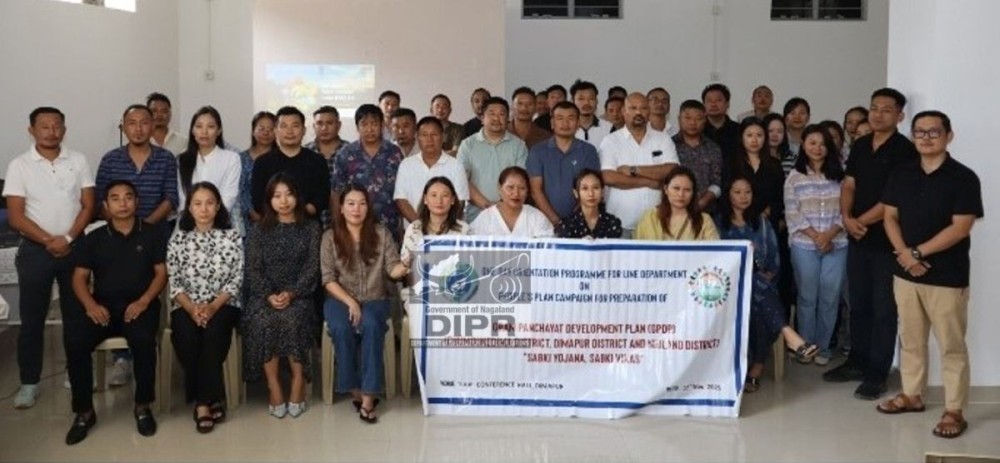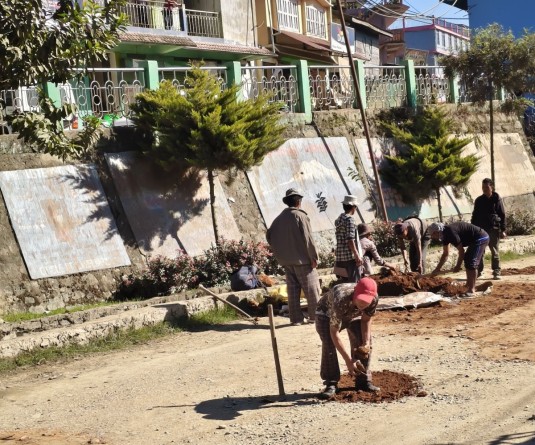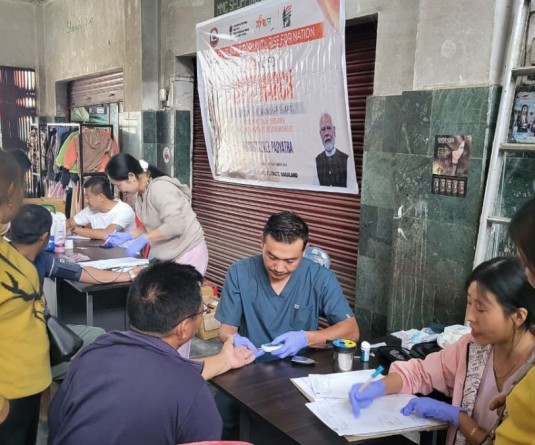Officials with participants during District Level Training on PAI 2.0 for Block officials and concerned department held at Tulip Conference Hall, Duncan Basti, Dimapur. (DIPR Photo)

Dimapur, November 12 (MExN): The State Institute of Rural Development (SIRD), Nagaland, organised a critical training programme for department and block officials under revamped RGSA at Tulip Conference Hall, Duncan Basti, Dimapur on November 12.
The training was held for the ongoing initiative of the implementation and data collection of the Panchayat Advancement Index (PAI 2.0) in the districts of Dimapur, Niuland, and Chümoukedima.
In an update issued by DIPR, it stated that the program was attended by all the Heads of Department from the three districts of the concerned line departments and the Block with 2 (two) officials each from respective offices.
The objective of the training was to familiarize the officials with the PAI 2.0 framework and the precise methodology for data entry, validation, and timely submission of information to ensure accuracy and consistency across departments.
Project Director, Dimapur, Limameren Yaden, in his inaugural address welcomed all the members for their active participation. Yaden emphasized the relevance of PAI 2.0 as a scientific tool for bottom up planning; enabling panchayats to identify local needs and monitor progress.
He urged all the members to be sincere throughout the training to familiarize the framework and methodology in ensuring accurate implementation of PAI 2.0 in their respective district.
Consultant RGSA, Risuhli Rhakho, highlighted the concept of PAI 2.0, where she stated that PAI was an assessment index of a village to measure advancement of a village to attain the 9 LSDG themes – poverty free & enhanced livelihood Panchayat, healthy Panchayat, child friendly Panchayat, water sufficient Panchayat, clean & green Panchayat, self-sufficient infrastructure Panchayat, socially just & secured Panchayat, Panchayat with good governance and women friendly Panchayat.
Rhakho informed that PAI will have different users at the state/district/block level by the Nodal Officers and at the village level by the VDB secretary.
‘Datas will first be submitted by VDB Secretary and it will be validated and checked by the Block level officials; the block datas will be verified by the district level officials; while the district datas will be validated by state level and state datas will be assessed by the Ministry of Panchayati Raj, where it will be calculated for PAI Scoring,’ stated the press release.
She added that PAI has 150 different indicators (numeric & binary) and 178 unique data points to be filled by VDB Secretary for data collection; 58 data points are auto-ported questions from different departmental websites and will be compiled on the basis of Local Indicator Framework (LIF) which are a set of different themes/indicators and data sources.
On the role of line departments, she informed them to nominate Nodal Officers at State/District/Block levels to ensure good data quality for PAI 2.0 who will Monitor progress of PAI at different levels, ensuring timely submission and validation of datas.
She mentioned that PAI datas will be used for National Panchayat Award 2025 to be held in the month of November every year, which will be given based on the performance of the 9 LSDGs of each village.
The PAI Score card will be available in the PAI portal after final calculation was made by the Central Ministry which will help a village to check the themes they are weak in, and help them to improve in the next year while planning for development activities.
Likewise, she said that PAI training was organized to make the Block level officials and line department officials as well as the VDB Secretaries to know their roles and responsibilities in PAI functioning PAI assessment index.






